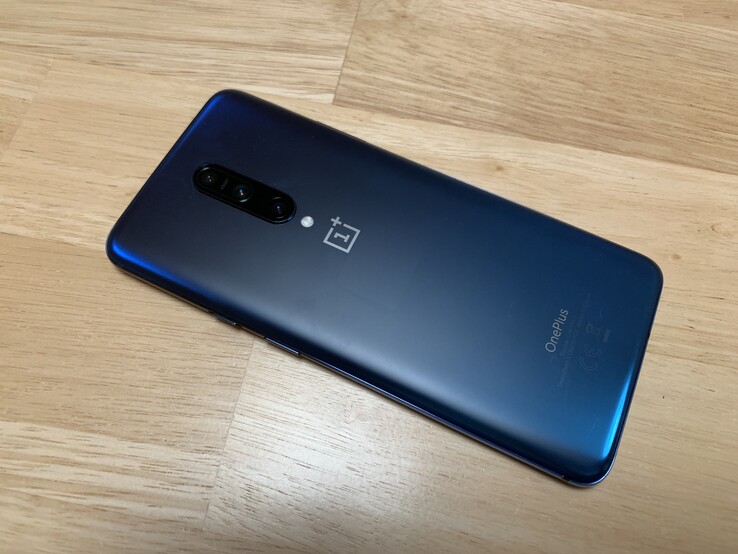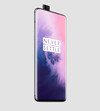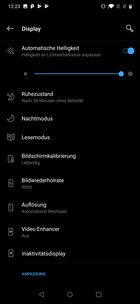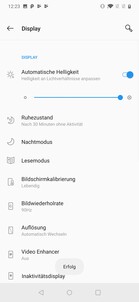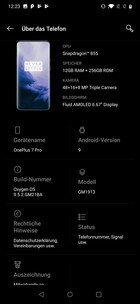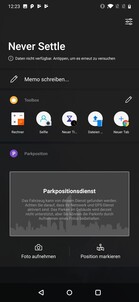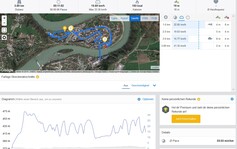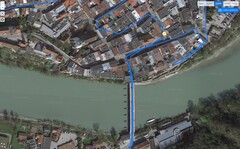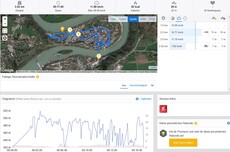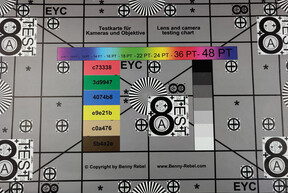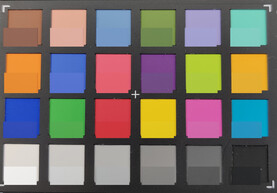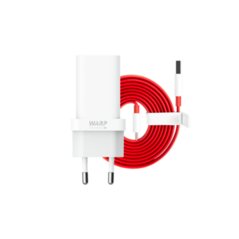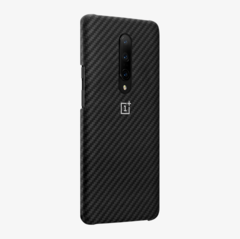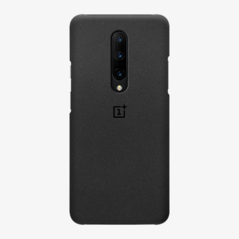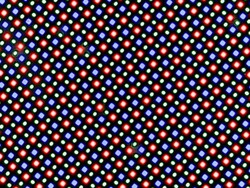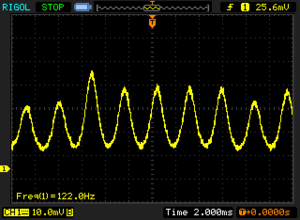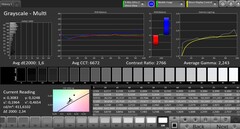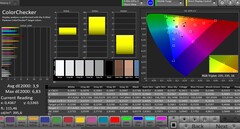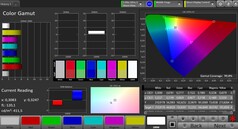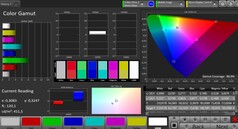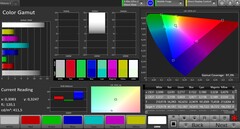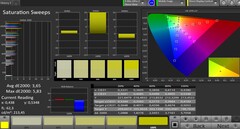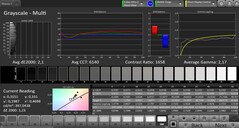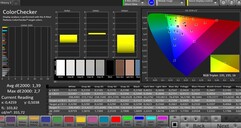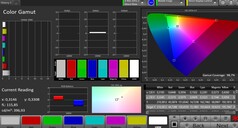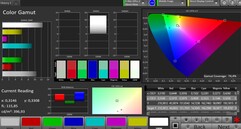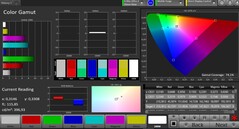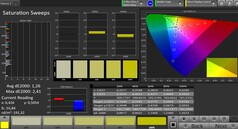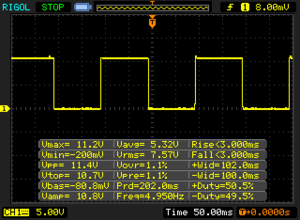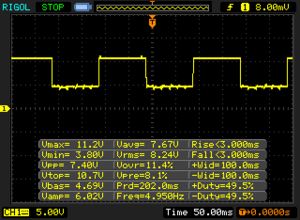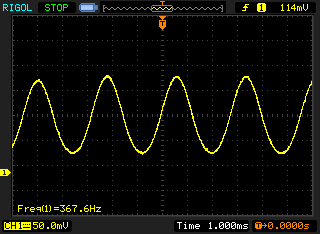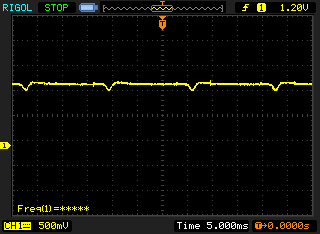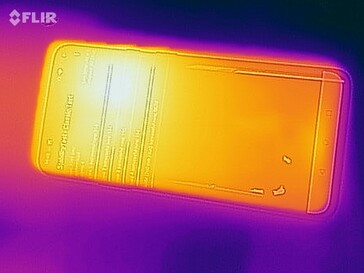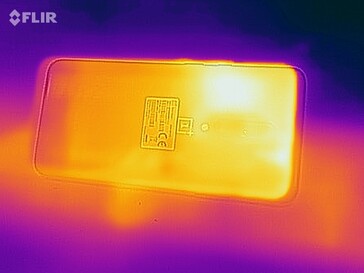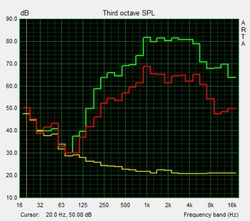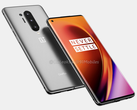OnePlus 7 Pro Smartphone Review

Until now, OnePlus product launches have been predictable, with one smartphone being brought to market at a time. This year marks a break from tradition, with the company announcing the much speculated about OnePlus 7 and OnePlus 7 Pro. The latter, as the nomenclature suggests, is the first OnePlus device that could be considered flagship rather than a cheaper alternative priced to disrupt the flagship market. Strictly speaking, OnePlus has just released three smartphones if you count the 5G version of the 7 Pro. However, the device is identical to the standard 7 Pro except for the addition of a 5G modem. Moreover, it will only be sold in selected markets with established 5G networks such as Finland and the UK. Hence, OnePlus is only releasing two new smartphones globally.
The 7 Pro is more than just a beefed-up version of the OnePlus 7 though. The former features a new design and a host of other firsts for OnePlus, whereas the latter is more of an evolution of the OnePlus 6T. The 7 Pro has no notch, for example, and a motorised pop-up front-facing camera like the Vivo NEX Ultimate. This gives the 7 Pro a higher screen-to-body ratio than the OnePlus 7, although the display differences do not end there. The 7 Pro is taller and has a larger display than its non-Pro sibling, while OnePlus has equipped the former with a higher resolution panel than the latter that gives it a higher pixel density. Moreover, the 7 Pro has a 90 Hz display compared to the 60 Hz one that the OnePlus 7 has. Incidentally, the 7 Pro is the first smartphone to have a display that can constantly refresh at 90 Hz. Other devices, such as the Razer Phone 2, have variable refresh rate displays.
Additionally, the 7 Pro has three rear-facing cameras to the two in the regular model. Both have a 48 MP Sony IMX 586 main sensor, but the OnePlus 7 has just a 5 MP depth sensor, whereas the 7 Pro has telephoto and ultra-wide sensors. Both devices have an in-screen fingerprint sensor and come with 6 GB or 8 GB of RAM, although the 7 Pro also has a 12 GB variant. You can choose between 128 GB or 256 GB variants for both models too. Incidentally, the OnePlus 7 and 7 Pro are the first smartphones that have UFS 3.0 flash storage.
The 7 Pro will be available to purchase online from May 21, but you can buy the device three days earlier from pop-up stores like the one in Berlin. The 7 Pro starts at £649/$669 and rises to £799/$749 for the 12 GB/256 GB model, which is considerably more expensive than the OnePlus 6T or the 6T McLaren Edition. OnePlus has also brought the latter’s Warp Charge charging technology to the 7 Pro, but not the standard model.
We have chosen to compare the 7 Pro against the OnePlus 6T and the 6T McLaren Edition, along with modern flagships. Our flagship comparison devices will include the Apple iPhone XS Max, the Huawei P30 Pro, the Samsung Galaxy S10 Plus and the Xiaomi Mi 9.
- 05.14.2019: Initial tests and photos
- 05.15.2019: Additional benchmarks and heatmap images added. Temperature section expanded.
- 05.16.2019: Additional benchmarks display tests and battery tests added.
- 05.17.2019: GPS section updated, PWM measurements and additional test photos added.
- 05.20.2019: Review completed
Case
OnePlus has designed a completely newly chassis for the 7 Pro. By contrast, the company has carried over the design of the OnePlus 6T to the OnePlus 7. The 7 Pro is marginally wider than its predecessors such as the OnePlus 5T and 6T McLaren Edition, although it is noticeably longer. The 7 Pro is thicker and heavier too. However, its rounded display conceals this added heft well and ensures that the 7 Pro fits nicely in our hands.
In our opinion, the front of the 7 Pro is its highlight, at least visually. OnePlus has done away with the notch that it used in the OnePlus 6T and has engineered the front-facing camera within a motorised housing, which gives the 7 Pro an impressive 88.6% screen-to-body ratio.
Both sides of the device are covered in glass, although OnePlus factory pre-installs a plastic screen protector. The protector has rather crisp edges that do not feel as smooth as the glass display, but it does offer added scratch protection.
OnePlus has made some changes to the back glass too. The company unveiled three colour options, which it calls Almond, Mirror Gray and Nebula Blue. The second of the three shimmers when the light catches it, while the latter has a matte finish that also has a slight colour gradient to it. The Almond colour is a blend of cream and white, which also comes with a golden frame. OnePlus will not sell the Almond model at launch though and is keeping it for a separate release.
Our test device is the Nebula Blue edition, which looks great to our eyes. Personally, we prefer the metal backs that OnePlus used to use on its older devices such as the 5T as they feel more premium than glass. However, many manufacturers claim that metal backs interfere with the performance of antennas, whereas glass does not. Hence, glass is now the material of choice for many OEMs. The 7 Pro still feels like a premium smartphone though with its tapered edges that blend nicely into each other. The transitions between materials are small and evenly tight across the whole of our review unit, which adds to its flagship feel.
The 7 Pro is also sturdy and resists any pressure that we apply to the front or the back glass. We can hardly twist our review unit either, albeit we can hear some quiet creaks when we try to do so. The 7 Pro also weighs 206 g (~7.3 oz), which is about as heavy as the iPhone XS Max. This is not necessarily a bad thing though and adds to the device’s premium feel. Overall, the 7 Pro is an impressively well-built smartphone. Its build quality is up there with the best of other modern flagships in our opinion.
OnePlus still does not IP certify its devices, although reviewers such as Dave2D have demonstrated that it will survive being temporarily submerged in shallow depths of water. We would recommend against testing this out though and instead treat the device as if it were not water resistant or dustproof.
Connectivity
OnePlus still refuses to include a microSD card slot in its devices too. The company claims that storing data on microSD cards offers a worse user experience than using internal storage, which is a rather flimsy justification. However, the base model comes with 128 GB of storage, which should be enough for most people. All variants have dual-SIM card slots too.
OnePlus currently sells the 7 Pro in the following RAM and storage combinations:
- 6 GB of RAM / 128 GB of storage: £649/$669
- 8 GB of RAM / 256 GB of storage: £699/$699
- 12 GB of RAM / 256 GB of storage: £799/$749
The 7 Pro also supports Bluetooth 5.0 and NFC as all modern flagships do. However, OnePlus continues to follow the other flagship trend of omitting the headphone jack, the justification for which we covered in our OnePlus 6T review. In short, OnePlus claims that people who can afford flagship smartphones are increasingly using wireless headphones instead of wired ones. Google also recently used the inverse of this logic to explain why it included a headphone jack on the Pixel 3a and 3a XL.
Software
OnePlus continues to fit its devices with OxygenOS. The version installed on our review unit is 9.5.2, which the company bases on Android 9.0 Pie. This build comes with April 2019 android security patches, which were only a month old when we started testing the device. OnePlus has introduced numerous new features with OxygenOS 9.5, including something called Zen Mode, which disables everything except for the ability to use the camera or make and receive calls for 20 minutes. All notifications will be muted for that time, and you cannot cancel the timer once it has started. OnePlus has added a Quick Settings tile so that you can enable it without having to go into Settings.
OxygenOS 9.5 also incorporates a quasi-LED notification light, whereby the edges of the screen light up when the device receives a notification. OnePlus has improved the gaming mode too, but we shall cover this in the Games section of this review. The inclusion of a screen recorder could prove useful for streamers as it can also record audio. The mode can also record ambient sounds, allowing you to give commentary as you game.
OnePlus continues to refrain from installing a slew of third-party apps. The company only pre-installed Netflix apart from the core set of applications, although the OS only allows you to disable rather than uninstall it, which is disappointing.
Overall, OxygenOS feels snappy and boots quickly. The OS is intuitive and has a few more useful features that stock Android lacks. It is also nice to see that OnePlus has certified the 7 Pro with Widevine DRM L1, which allows it to stream DRM protected content in HD. Not all OnePlus devices have been capable of doing so, for reference.
Communication & GPS
The 7 Pro also has all Wi-Fi connectivity that one would expect from a current flagship smartphone. OnePlus has equipped the device with a 2x2 MIMO antenna, while its modem supports up to IEEE 802.11 ac. Our review unit still achieved comparably slow Wi-Fi speeds in our tests despite its decent paper specifications. While most modern flagships average at least 600 MBit/s in iperf3 Client Wi-Fi tests, the 7 Pro could only manage around 470 MBit/s. Hopefully, OnePlus can improve this with a software update, although you will only the notice its speed if you have a high-speed internet connection.
The Wi-Fi reception also drops by around 25% when we move our test device approximately 10 metres (~33 ft) away from our reference router. Websites and media content load still load quickly though.
The 7 Pro supports a wide selection of LTE bands, so you should have no problems with connecting to an LTE network irrespective of where you live. Our review unit maintained decent reception on the German D2 network during our tests and even down narrow streets. Hence, you should experience no reception issues.
The 7 Pro uses BeiDou, dual-channel Galileo, GLONASS, dual-channel GPS including A-GPS and SBAS for location services. These allow our review unit to achieve a satellite fix with up to 6 metres (~20 ft) accuracy outdoors, which is comparatively inaccurate for a flagship smartphone.
Likewise, we were surprised to see that the 7 Pro could not find a satellite when we tested it indoors. The built-in compass also takes a moment or two to calibrate, but it accurately shows our orientation in apps such as Google Maps when it finds its bearings.
We also took the 7 Pro on a bike ride to compare its location accuracy against our trip computer, the Garmin Edge 520. Our results demonstrate a mixed picture. Our review unit was impressively accurate while we were cycling in open areas. However, it struggled to keep up with us in built-up areas and took big shortcuts to do so. Overall, the 7 Pro is accurate enough for general navigation devices, but other flagships such as the Galaxy S10 Plus and iPhone XS Max have better GPS modules.
Telephone Features & Call Quality
OnePlus has also updated its phone app, with the company moving the tabs for call history, contacts and favourites to the bottom of the app. There is now a dedicated button for adding a new contact too, while OnePlus has also set the search button to remain constantly visible. All other features and layout remain unchanged though.
The 7 Pro has mixed call quality. The earpiece doubles as a loudspeaker, which means that it can get deafeningly loud when used just as an earpiece. In fact, we had to reduce the call volume to below 50% before our call partner sounded quiet enough to our ears. The earpiece gets so loud that you may as well have the call on speakerphone if you set the call volume above 50%.
Our call partner at least remained intelligible throughout our tests though. We occasionally noticed some background noise at high volumes, but this is more because of the speaker reverberating and picking up ambient sound than the microphone struggling to filter out noise. The microphone also picked up our voice well, and we had no complaints from our call partner about our voice sounding too thin or quiet during our tests.
The 7 Pro supports voice over LTE (VoLTE) and Wi-Fi calling (VoWiFi), but you must enable these in Developer options as OnePlus disables them by default. Your carrier must have provisioned the 7 Pro on its network for both technologies to work though. They will not work just because you have enabled them.
Cameras
The 7 Pro has three rear-facing cameras, all of which are new to OnePlus devices. The 7 Pro is also the first smartphone released by the company to feature cameras with different focal lengths, which is to achieve 3x optical zoom. The front-facing camera, we mentioned earlier, is integrated within a motorised housing that retracts into the case when it is not being used.
The default camera app has fewer gimmicks than those developed by other OEMs. There are no augmented reality (AR) modes, for example, but there is a pro mode along with a portrait mode. The latter can create bokeh effect shots.
The main rear-facing camera is a 48 MP Sony IMX586 sensor. However, OnePlus has set the sensor to combine 4 pixels into 1 by default to create a 12 MP image, which you may have seen referred to elsewhere as pixel binning. The effect of this is to create a more detailed 12 MP photo than a traditional 12 MP sensor could. You can still shoot in 48 MP though if you switch to Pro mode in the default camera app.
The 7 Pro also has telephoto and ultra-wide-angle lenses. Both sensors are lower resolution sensors with narrower apertures than the Sony IMX586, although they still take detailed pictures in good ambient light.
OxygenOS’ night mode still disappoints though, despite the 7 Pro’s flagship-level main sensor. Unexpectedly, the Sony IMX586 takes sharper and less noisy looking pictures in the standard camera mode than it does in night mode. Hence, the night mode currently seems rather redundant.
The pop-up front-facing camera may look like the one that Vivo used in the NEX Ultimate, but that is where the comparisons should end. The mechanism in the 7 Pro not only moves faster than the one in the NEX Ultimate, but it also uses the accelerometer to protect itself. The housing retracts if the system senses that it is falling, which should ensure that the camera does not snap off if you drop the device. OnePlus also rates the mechanism for up to 300,000 uses, which equates to over 5 years if you open and close it 150 times a day.
OnePlus has equipped the 7 Pro with a camera 16 MP front-facing sensor. Unfortunately, it is only a fixed focus sensor, which makes it tricky to keep objects or people in focus. The device also does not have a dedicated front-facing LED flash, but the default camera app can use the display as a quasi-flash.
Overall, the front-facing sensor takes colourful and detailed photos. However, the dynamic range in dark areas could be better. An autofocus sensor would have been more practical.
The 7 Pro can record videos in up to 4K at 60 FPS, although OIS only works at up to 30 FPS for some reason. The default camera app can shoot at 240 FPS in 1080p and 480 FPS in 720p to create slow-motion effects. Videos shot with our review unit generally impressed us. The device adjusts exposure quickly in changing lighting conditions and does a good job at keeping objects or people in focus even if they are moving.
The main camera performed well under controlled lighting conditions too. Our review unit's captures of our test chart look sharp and preserves fine structures. The image could be a bit brighter though.
The Sony IMX586 sensor also reproduces most colours accurately. Some colours are slightly warmer than the ColorChecker Passport reference colours though.
Accessories & Warranty
OnePlus includes a 30-W charger in the box that the company markets as Warp Charge, which we first saw in the 6T McLaren Edition. Please note that the OnePlus 7 does not support Warp Charge. The company bundles a USB Type-C cable too, although it only supports USB 2.0 speeds. This is a strange move because the 7 Pro supports faster transfer speeds.
OnePlus also includes a SIM tool and a protective cover, but we are saddened to see no headphone jack adapter. OnePlus sells the adapter for £6.99/$7.95 on its online shop, which is a rather cheap move in our eyes considering how expensive the 7 Pro is. The company does not include any headphones either and instead lists them as an optional accessory on its store.
You can buy replacement accessories from the OnePlus store too along with other accessories such as the upcoming Bullets Wireless 2. OnePlus also sells accessory bundles such as the 7 Pro Premium Bundle, which includes a case, a WARP30 charger, a Warp Charge cable and a set of Type-C Bullets headphones.
The 7 Pro comes with 24 months limited manufacturer’s warranty. OnePlus has now established itself in over 35 countries, so you should have no problem with returning the device for a warranty repair.
Please see our Guarantees, Return Policies & Warranties FAQ for country-specific information.
Input Devices & Operation
The 7 Pro is the first OnePlus device to feature a curved display, which other OEMs such as Huawei and Samsung have been incorporating in their flagships for a few years. Curved displays are still more style over functionality though, as it is much easier to unintentionally activate the touchscreen than it is on a device with a flat display. OnePlus promises to have worked to minimise accidental touches, but we still inadvertently did so a few times during our tests. The display at least responds quickly to inputs though, thanks to its low latency, which we measure at 32.5 ms.
OnePlus preinstalls Google Gboard as the default keyboard on the 7 Pro. The app functions just as it does on other devices that we have reviewed. You can install other keyboards should you dislike the default one though.
The 7 Pro has an optical in-screen fingerprint sensor that OnePlus promises is larger and features a larger camera sensor than the one it used in the 6T. The company has placed the sensor in what should be a natural position for people’s hands, although it is rather particular about how you place your finger. The device illuminates a fingerprint shaped guide to help you hit the sensor first time and OnePlus has improved the recognition rate too compared to the solution that it used in the 6T. Our review unit unlocks impressively quickly for a device with an in-screen sensor.
You can also use the front-facing camera for facial recognition, but keep in mind that this is less secure and slower than unlocking the device with a fingerprint. The camera can recognise us even in low light, but there are no advantages to using face unlock over the fingerprint sensor other than to watch the mechanism move up and down.
Display
The 7 Pro has a 6.67-inch curved AMOLED panel that operates natively at 3,120x1,440. OnePlus markets the display as being a Fluid AMOLED panel, which could either refer to its curved edges or its variable resolution. The 7 Pro is the first smartphone to have a display that can constantly run at 90 Hz. Gaming phones such as the Razer Phone 2 have high refresh rate displays too. However, they have variable refresh rates that only switch to higher refresh rates in games and other supported content. 90 Hz consumes more power than 60 Hz does, but you can always set the display to the lower refresh rate should you want longer battery life.
OnePlus has worked with Samsung on the display in the 7 Pro, a partnership which it claims has created one of the best displays in any smartphone. This is not just a flimsy marketing claim either. DisplayMate rated the display A+ in its OLED Display Technology Shoot-Out, stating that it has “close to textbook perfect calibration accuracy and performance that is visually indistinguishable from perfect”.
Our tests confirm this assessment. The display in our review unit reached an average maximum luminosity of 584 cd/m² in our tests according to X-Rite i1Pro 2. Our tests demonstrate that the display is 97% evenly lit too. Colours also look vibrant, while the 90 Hz refresh rate makes any movements onscreen look noticeably smoother than they do on a 60 Hz panel.
| |||||||||||||||||||||||||
Brightness Distribution: 97 %
Center on Battery: 586 cd/m²
Contrast: ∞:1 (Black: 0 cd/m²)
ΔE ColorChecker Calman: 1.39 | ∀{0.5-29.43 Ø4.77}
ΔE Greyscale Calman: 1.6 | ∀{0.09-98 Ø5}
99.8% sRGB (Calman 2D)
Gamma: 2.243
CCT: 6672 K
| OnePlus 7 Pro AMOLED, 3120x1440, 6.7" | Samsung Galaxy S10 Plus OLED, 3040x1440, 6.4" | Apple iPhone Xs Max OLED, 2688x1242, 6.5" | Xiaomi Mi 9 AMOLED, 2340x1080, 6.4" | OnePlus 6T McLaren Edition AMOLED, 2340x1080, 6.4" | Huawei P30 Pro OLED, 2340x1080, 6.5" | |
|---|---|---|---|---|---|---|
| Screen | -66% | -3% | 11% | -189% | -16% | |
| Brightness middle (cd/m²) | 586 | 710 21% | 656 12% | 593 1% | 435 -26% | 597 2% |
| Brightness (cd/m²) | 584 | 721 23% | 659 13% | 587 1% | 442 -24% | 608 4% |
| Brightness Distribution (%) | 97 | 97 0% | 88 -9% | 94 -3% | 95 -2% | 89 -8% |
| Black Level * (cd/m²) | ||||||
| Colorchecker dE 2000 * | 1.39 | 3.7 -166% | 1.7 -22% | 0.9 35% | 6.79 -388% | 2.2 -58% |
| Colorchecker dE 2000 max. * | 2.7 | 10.3 -281% | 2.8 -4% | 2 26% | 14.93 -453% | 3.6 -33% |
| Greyscale dE 2000 * | 1.6 | 1.5 6% | 1.7 -6% | 1.5 6% | 5.4 -238% | 1.6 -0% |
| Gamma | 2.243 98% | 2.1 105% | 1.998 110% | 2.27 97% | 2.252 98% | 2.23 99% |
| CCT | 6672 97% | 6611 98% | 6487 100% | 6548 99% | 7588 86% | 6268 104% |
* ... smaller is better
Screen Flickering / PWM (Pulse-Width Modulation)
| Screen flickering / PWM detected | 122 Hz | ||
The display backlight flickers at 122 Hz (worst case, e.g., utilizing PWM) . The frequency of 122 Hz is very low, so the flickering may cause eyestrain and headaches after extended use. In comparison: 53 % of all tested devices do not use PWM to dim the display. If PWM was detected, an average of 8088 (minimum: 5 - maximum: 343500) Hz was measured. | |||
AMOLED panels typically produce pure blacks because they can switch off pixels individually, as the display in the 7 Pro can. Blacks look rich and help the display achieve a theoretically infinite contrast ratio, which makes colours look sharper than they do on devices with IPS panels. Most modern flagships have OLED or AMOLED panels though, so they are all capable of matching the colour accuracy of the 7 Pro’s display.
OnePlus has two colour modes within OxygenOS, which it calls Natural and Vivid. There is also an extended mode that allows you to switch between colour spaces and an option to manually adjust the display’s white balance.
Our review unit reproduces colours accurately regardless of the colour mode selected, although CalMAN does show that grey tones have a slight colour tint to them. Our review unit has excellent colour space coverages when set to the Vivid mode too. Natural mode yields worse coverage for larger colour spaces though.
The panel has low response times too, which makes it well-suited for gamers.
Overall, the 7 Pro has an excellent display. The panel supports HDR 10+, has low latency times and is impressively colour accurate out of the box. Likewise, the display in our review unit can reach a minimum brightness of 2.16 cd/m², which makes it dark enough to read comfortably at night or in dark rooms without straining your eyes.
Display Response Times
| ↔ Response Time Black to White | ||
|---|---|---|
| 6 ms ... rise ↗ and fall ↘ combined | ↗ 3 ms rise | |
| ↘ 3 ms fall | ||
| The screen shows very fast response rates in our tests and should be very well suited for fast-paced gaming. In comparison, all tested devices range from 0.1 (minimum) to 240 (maximum) ms. » 17 % of all devices are better. This means that the measured response time is better than the average of all tested devices (20.2 ms). | ||
| ↔ Response Time 50% Grey to 80% Grey | ||
| 6 ms ... rise ↗ and fall ↘ combined | ↗ 3 ms rise | |
| ↘ 3 ms fall | ||
| The screen shows very fast response rates in our tests and should be very well suited for fast-paced gaming. In comparison, all tested devices range from 0.165 (minimum) to 636 (maximum) ms. » 17 % of all devices are better. This means that the measured response time is better than the average of all tested devices (31.6 ms). | ||
AMOLED panels do not have backlights like IPS panels do, so OEMs generally get around this by using pulse-width modulation (PWM). PWM looks like flickering to human eyes and can cause health problems such as eye strain or headaches for some people. The display in our review unit flickers at 122 Hz when set to 60 Hz, which is low enough to affect those who are PWM sensitive. Switching the display to 90 Hz increases the frequency to 367.6 Hz, which may still cause ill effects for some people.
OnePlus has introduced DC dimming with a new update though, which restricts the voltage that the LEDs receive to manipulate the display brightness. While this sounds like great news, this method of brightness control has its downsides. CalMAN and our photo spectrometer tell us that DeltaE deviations increase when DC dimming is enabled, although we cannot perceive any reduction in colour accuracy with our eyes. Moreover, the display still flickers at low brightness, which our test equipment recorded at a constant 60 Hz. We had the same experience with the Xiaomi Black Shark 2, although the flat amplitude may affect fewer people than PWM does. However, we would recommend trying out the 7 Pro before you buy it in case the flickering irritates your eyes.
In short, DC dimming represents an improvement over PWM. It is not a magic bullet for display flickering though.
The 7 Pro is easy to use outdoors, even in intense sunlight thanks to its bright and contrast-rich AMOLED display. Our review unit remains readable under direct sunlight even at medium brightness, although the ambient light sensor does not work as aggressively as we would have liked it to do. Often the screen should be brighter in our opinion, as you we have tried to demonstrate in the photos below.
The 7 Pro has excellent viewing angles because of its AMOLED panel. We noticed no brightness, colour or image distortions even at acute viewing angles.
Performance
OnePlus equips the 7 Pro with the Qualcomm Snapdragon 855, the SoC of choice for Android OEMs, excluding Huawei and Samsung. You may be familiar with the Snapdragon 855 from our Xiaomi Mi 9 review, which performed strongly in synthetic benchmarks. The 7 Pro cannot outperform the Mi 9 in benchmarks despite having liquid cooling. Its fast internal storage helps the system deliver excellent benchmark results and puts the 7 Pro on par with other flagships.
The integrated Adreno 640 GPU holds its own in benchmarks too, and is powerful enough even for the most complex of apps.
| PCMark for Android | |
| Work performance score (sort by value) | |
| OnePlus 7 Pro | |
| Samsung Galaxy S10 Plus | |
| Xiaomi Mi 9 | |
| OnePlus 6T McLaren Edition | |
| Huawei P30 Pro | |
| Average Qualcomm Snapdragon 855 (10330 - 14439, n=19) | |
| Work 2.0 performance score (sort by value) | |
| OnePlus 7 Pro | |
| Samsung Galaxy S10 Plus | |
| Xiaomi Mi 9 | |
| OnePlus 6T McLaren Edition | |
| Huawei P30 Pro | |
| Average Qualcomm Snapdragon 855 (8342 - 11440, n=19) | |
| Basemark GPU 1.1 | |
| 1920x1080 Vulkan Medium Offscreen (sort by value) | |
| OnePlus 7 Pro | |
| Samsung Galaxy S10 Plus | |
| Xiaomi Mi 9 | |
| Huawei P30 Pro | |
| Average Qualcomm Snapdragon 855 (24.5 - 36.3, n=3) | |
| Vulkan Medium Native (sort by value) | |
| OnePlus 7 Pro | |
| Samsung Galaxy S10 Plus | |
| Xiaomi Mi 9 | |
| Huawei P30 Pro | |
| Average Qualcomm Snapdragon 855 (22.7 - 32.2, n=2) | |
| 1920x1080 OpenGL Medium Offscreen (sort by value) | |
| OnePlus 7 Pro | |
| Samsung Galaxy S10 Plus | |
| Xiaomi Mi 9 | |
| Huawei P30 Pro | |
| Average Qualcomm Snapdragon 855 (33.1 - 37.4, n=3) | |
| VRMark - Amber Room (sort by value) | |
| OnePlus 7 Pro | |
| Samsung Galaxy S10 Plus | |
| Xiaomi Mi 9 | |
| Huawei P30 Pro | |
| Average Qualcomm Snapdragon 855 (4486 - 4969, n=3) | |
| Basemark ES 3.1 / Metal - offscreen Overall Score (sort by value) | |
| OnePlus 7 Pro | |
| Samsung Galaxy S10 Plus | |
| Apple iPhone Xs Max | |
| Xiaomi Mi 9 | |
| Huawei P30 Pro | |
| Average Qualcomm Snapdragon 855 (1075 - 1425, n=4) | |
| Average of class Smartphone (205 - 7731, n=34, last 2 years) | |
We have managed to run browser benchmarks though, and the initial results advantage Xiaomi. The 7 Pro achieved worse results than the Mi 9 in three of the four browser benchmarks that we ran on both smartphones. The margins are small, but the Mi 9 still has the edge currently.
Subjectively, our review unit loads websites and media content quickly. Even complex HTML 5 websites appear without delay.
| Jetstream 2 - 2.0 Total Score | |
| Average of class Smartphone (23.8 - 387, n=148, last 2 years) | |
| OnePlus 7 Pro (Chrome 74) | |
| Huawei P30 Pro (Chrome 73) | |
| Average Qualcomm Snapdragon 855 (45.5 - 67, n=16) | |
| Xiaomi Mi 9 (Chrome 73) | |
| Samsung Galaxy S10 Plus (Samung Browser 9.0) | |
| Speedometer 2.0 - Result 2.0 | |
| Average of class Smartphone (15.2 - 643, n=121, last 2 years) | |
| Huawei P30 Pro (Chrome 73) | |
| Xiaomi Mi 9 (Chrome 73.0.3683.75) | |
| Average Qualcomm Snapdragon 855 (42.5 - 67.9, n=15) | |
| OnePlus 7 Pro (Chome 74) | |
| Samsung Galaxy S10 Plus (Samsung Browser 9.0) | |
| WebXPRT 3 - Overall | |
| Average of class Smartphone (38 - 380, n=31, last 2 years) | |
| Apple iPhone Xs Max (Safari 12) | |
| Huawei P30 Pro (Chrome 73) | |
| Samsung Galaxy S10 Plus (Samsung Browser 9.0) | |
| OnePlus 7 Pro (Chrome 74) | |
| Xiaomi Mi 9 (Chrome 73.0.3683.75) | |
| Average Qualcomm Snapdragon 855 (90 - 129, n=20) | |
| Octane V2 - Total Score | |
| Average of class Smartphone (2228 - 126661, n=196, last 2 years) | |
| Apple iPhone Xs Max (Safari 12) | |
| OnePlus 7 Pro (Chrome 74) | |
| Xiaomi Mi 9 (Chrome 73.0.3683.75) | |
| Average Qualcomm Snapdragon 855 (17011 - 33918, n=21) | |
| Huawei P30 Pro (Chrome 73) | |
| Samsung Galaxy S10 Plus (Samsung Browser 9.0) | |
| OnePlus 6T McLaren Edition (Chrome 71) | |
| Mozilla Kraken 1.1 - Total | |
| OnePlus 6T McLaren Edition (Chrome 71) | |
| Average Qualcomm Snapdragon 855 (1852 - 2611, n=19) | |
| Huawei P30 Pro (Chrome 73) | |
| OnePlus 7 Pro (Chrome 74) | |
| Xiaomi Mi 9 (Chrome 73.0.3683.75) | |
| Samsung Galaxy S10 Plus (Samsung Browser 9.0) | |
| Average of class Smartphone (257 - 28190, n=155, last 2 years) | |
| Apple iPhone Xs Max (Safari 12) | |
* ... smaller is better
As we mentioned earlier in this review, the 7 Pro comes with either 128 or 256 GB of flash storage. The device is the first smartphone that you can purchase with UFS 3.0 flash storage, although the Galaxy Fold would have held this accolade but for its various display issues.
UFS 3.0 has been spoken about as being significantly faster than UFS 2.0, but initial AndroBench results demonstrate that that is not always the case. While the 7 Pro achieved almost twice as fast sequential read speeds than our fastest comparison device, its random and sequential write speeds only match those of the Mi 9. Worse still, our review unit has much slower random write speeds than the Mi 9 and the P30 Pro. Apps and the OS still load quickly, but UFS 3.0 does not appear to currently live up to the hype.
| OnePlus 7 Pro | Samsung Galaxy S10 Plus | Xiaomi Mi 9 | OnePlus 6T McLaren Edition | Huawei P30 Pro | Average 256 GB UFS 3.0 Flash | Average of class Smartphone | |
|---|---|---|---|---|---|---|---|
| AndroBench 3-5 | -28% | 125% | -28% | 116% | 184% | 443% | |
| Sequential Read 256KB (MB/s) | 1468 | 811 -45% | 666 -55% | 733 -50% | 849 -42% | 1547 ? 5% | 2243 ? 53% |
| Sequential Write 256KB (MB/s) | 387 | 249.1 -36% | 388.3 0% | 253.3 -35% | 250.8 -35% | 575 ? 49% | 1865 ? 382% |
| Random Read 4KB (MB/s) | 174.1 | 135.2 -22% | 149.4 -14% | 145.1 -17% | 174.4 0% | 210 ? 21% | 296 ? 70% |
| Random Write 4KB (MB/s) | 24.8 | 22.7 -8% | 165.3 567% | 22.3 -10% | 159.2 542% | 188.5 ? 660% | 339 ? 1267% |
| Sequential Read 256KB SDCard (MB/s) | 73 ? | 82.6 ? | 70.6 ? | ||||
| Sequential Write 256KB SDCard (MB/s) | 60.7 ? | 68.2 ? | 59.8 ? |
Games
The Adreno 640 is already a capable gaming GPU, but OnePlus has incorporated a game mode into Oxygen OS that promises to enhance the display among other tweaks. Within gaming mode is Fnatic mode, which OnePlus developed in partnership with the eponymous eSports team. When activated, the device not only mutes all notifications, but also optimises the GPU and SoC to deliver peak performance in games.
The 90 Hz display should also come into its own in games, but developers must first add support before titles can take advantage of this higher refresh rate. "Arena of Valor" is one game that does support higher refresh rates, but our review unit still only averages 60 FPS according to GameBench results, as does "Shadow Fight 3". "Asphalt 9: Legends" only runs at 30 FPS though, but this appears to be a software limitation.
We should also point out that the accelerometer, associated sensors and touchscreen all worked perfectly during our gaming tests. We experienced no issues with any of these components.
Emissions
Temperature
The 7 Pro remains pleasantly cool at idle, although the front of the device occasionally reaches a maximum of 30.9 °C (~88 °F). However, surface temperatures reach uncomfortably hot levels under load. We measured our review unit hitting 47 °C (~117 °F) on some parts of its display, which is almost dangerously hot.
Our review unit performed well under sustained load, and only thermal throttled minimally. This is partly thanks to the copper heatpipe that OnePlus has included, which we have seen other OEMs include in their recent flagships such as Samsung and its Galaxy S10 Plus or gaming phones such as the Razer Phone 2. In practical terms, framerates should remain more or less consistent even during prolonged gaming sessions.
(-) The maximum temperature on the upper side is 47 °C / 117 F, compared to the average of 35.2 °C / 95 F, ranging from 21.9 to 247 °C for the class Smartphone.
(±) The bottom heats up to a maximum of 42.9 °C / 109 F, compared to the average of 34 °C / 93 F
(+) In idle usage, the average temperature for the upper side is 30.4 °C / 87 F, compared to the device average of 32.9 °C / 91 F.
Speakers
Finally, OnePlus has developed a device with stereo speakers. The 7 Pro uses its earpiece and bottom speaker to create a stereo effect. The company claims to have positioned the main speaker to the right of the Type-C port to minimise the possibility of it being obscured by your palm. Apparently, most people tilt their devices to the left when switching to landscape mode, which would put the speaker at the top edge of the 7 Pro, rather than on the bottom edge if it were to the left of the Type-C port.
Subjectively, the speakers sound excellent. The ones in our review unit reached a maximum of 91 dB(A) during our tests, which is punishingly loud. The earpiece sounds much thinner than the dedicated speaker though, which delivers a surprising amount of bass. Overall, they produce a well-balanced and warm sound that is pleasing to our ears.
We would still recommend connecting external speakers or headphones where possible, as they will provide a better listening experience than the speakers can. You can connect audio peripherals either via Bluetooth or USB Type-C. We had no issues with either during our tests.
OnePlus 7 Pro audio analysis
(+) | speakers can play relatively loud (90.9 dB)
Bass 100 - 315 Hz
(-) | nearly no bass - on average 87% lower than median
(+) | bass is linear (0% delta to prev. frequency)
Mids 400 - 2000 Hz
(-) | nearly no mids - on average 87% lower than median
(+) | mids are linear (0% delta to prev. frequency)
Highs 2 - 16 kHz
(-) | nearly no highs - on average 87% lower than median
(+) | highs are linear (0% delta to prev. frequency)
Overall 100 - 16.000 Hz
(-) | overall sound is not linear (123.8% difference to median)
Compared to same class
» 93% of all tested devices in this class were better, 6% similar, 1% worse
» The best had a delta of 11%, average was 35%, worst was 134%
Compared to all devices tested
» 98% of all tested devices were better, 2% similar, 0% worse
» The best had a delta of 4%, average was 24%, worst was 134%
OnePlus 6T McLaren Edition audio analysis
(±) | speaker loudness is average but good (81.9 dB)
Bass 100 - 315 Hz
(-) | nearly no bass - on average 66.2% lower than median
(+) | bass is linear (0% delta to prev. frequency)
Mids 400 - 2000 Hz
(-) | nearly no mids - on average 66.2% lower than median
(+) | mids are linear (0% delta to prev. frequency)
Highs 2 - 16 kHz
(-) | nearly no highs - on average 66.2% lower than median
(+) | highs are linear (0% delta to prev. frequency)
Overall 100 - 16.000 Hz
(-) | overall sound is not linear (119.9% difference to median)
Compared to same class
» 89% of all tested devices in this class were better, 8% similar, 3% worse
» The best had a delta of 11%, average was 35%, worst was 134%
Compared to all devices tested
» 97% of all tested devices were better, 3% similar, 1% worse
» The best had a delta of 4%, average was 24%, worst was 134%
Power Management
Power Consumption
The 7 Pro has comparatively high power consumption. Our review unit consumes between 0.9 W and 2.9 W at idle, although it averages 1.8 W. Power consumption rises to a maximum of 8.2 W under load, which is 1.1 W lower than what the Mi 9 achieved in our tests. However, the 7 Pro averages 1.79 W more than the Xiaomi under load. In short, there are more frugal flagships than the 7 Pro.
| Off / Standby | |
| Idle | |
| Load |
|
Key:
min: | |
| OnePlus 7 Pro 4000 mAh | Samsung Galaxy S10 Plus 4100 mAh | Apple iPhone Xs Max 3174 mAh | Xiaomi Mi 9 3300 mAh | OnePlus 6T McLaren Edition 3700 mAh | Huawei P30 Pro 4200 mAh | Average Qualcomm Snapdragon 855 | Average of class Smartphone | |
|---|---|---|---|---|---|---|---|---|
| Power Consumption | 8% | 17% | 26% | 20% | 7% | 11% | 1% | |
| Idle Minimum * (Watt) | 0.9 | 0.73 19% | 1 -11% | 0.67 26% | 0.6 33% | 0.68 24% | 0.939 ? -4% | 0.843 ? 6% |
| Idle Average * (Watt) | 1.8 | 1.53 15% | 1.4 22% | 1.26 30% | 1.3 28% | 2.6 -44% | 1.506 ? 16% | 1.436 ? 20% |
| Idle Maximum * (Watt) | 2.9 | 2.07 29% | 1.7 41% | 1.29 56% | 2.1 28% | 2.77 4% | 1.799 ? 38% | 1.62 ? 44% |
| Load Average * (Watt) | 5.5 | 6.03 -10% | 4.6 16% | 3.71 33% | 4.5 18% | 3.74 32% | 4.61 ? 16% | 7.04 ? -28% |
| Load Maximum * (Watt) | 8.2 | 9.18 -12% | 6.7 18% | 9.3 -13% | 8.6 -5% | 6.82 17% | 9.04 ? -10% | 11.3 ? -38% |
* ... smaller is better
Battery Life
The 7 Pro has a 4,000 mAh battery, which is 300 mAh larger than the one in the 6T McLaren Edition. However, its higher refresh rate and resolution display take their toll on battery life. Our review unit still lasted a respectable 12:48 hours in our practical Wi-Fi battery life test, but that is almost 3 hours short of the runtime that the 6T McLaren Edition achieved.
The P30 Pro is the current king of batteries, but that is mainly because of its excellent runtimes under sustained load and when playing a looped H.264 video. The P30 Pro probably has about an hour longer battery life than the 7 Pro in daily use, but the latter should still last a full day of heavy use between charges. We reckon that most people could get two days use before needing to recharge, and perhaps even longer if you set the display to 60 Hz rather than 90 Hz.
When you eventually need to recharge the 7 Pro, its bundled charger will not keep you waiting long. The 30-W Warp Charge recharges our review unit fully in just over an hour, but you can get a few hours battery life if you charge the device for only about 10 minutes.
Warp Charge, unlike Qualcomm Quick Charge, does not heat the device up. The technology still produces waste heat, but most of it is emitted from the charger instead. The 7 Pro does not support wireless charging though, which may disappoint some people.
| OnePlus 7 Pro 4000 mAh | Samsung Galaxy S10 Plus 4100 mAh | Apple iPhone Xs Max 3174 mAh | Xiaomi Mi 9 3300 mAh | OnePlus 6T McLaren Edition 3700 mAh | Huawei P30 Pro 4200 mAh | |
|---|---|---|---|---|---|---|
| Battery runtime | -14% | -8% | -7% | 18% | 29% | |
| Reader / Idle (h) | 29.1 | 26 -11% | 21.8 -25% | 27.5 -5% | 32.8 13% | |
| H.264 (h) | 13.4 | 15.4 15% | 13.4 0% | 16.8 25% | 19.9 49% | |
| WiFi v1.3 (h) | 12.8 | 8.1 -37% | 12.4 -3% | 9.1 -29% | 15.1 18% | 14 9% |
| Load (h) | 3.9 | 3.1 -21% | 3.7 -5% | 3.2 -18% | 5.7 46% |
Pros
Cons
Verdict
The OnePlus 7 Pro is an impressive first attempt by the Chinese manufacturer at creating a true flagship smartphone. The device has fast storage, decent battery life, ridiculously quick charging, a premium design, an improved fingerprint scanner, and a notchless display. Oh, and it has a 90 Hz display too. That is forgetting the motorised pop-up front-facing camera, which is sure to turn heads. The stereo speakers impressed us too, with their full-bodied and warm sound.
The 7 Pro may be the priciest OnePlus device to date, but it still significantly undercuts the flagship competition regardless of which version you buy. It even outperforms other flagships in some areas with its short charging times, its high screen-to-body ratio and its 90 Hz display.
We do have some criticisms. The curved display is more style over substance, while it is a hefty and comparatively long smartphone. Moreover, the 7 Pro runs comparatively hot, to the point where it could be difficult for some people to hold the device during prolonged gaming sessions. We wish that OnePlus would IP certify its devices too, and add wireless charging, as these are easy things upon which to criticise the 7 Pro when compared to other flagships. Other devices also offer faster Wi-Fi, and OnePlus’ justification of removing the headphone jack still seems flimsy at best.
The OnePlus 7 Pro is an impressive flagship with several features that make it stand out from its contemporaries.
The inclusion of a heat pipe helps prevent the SoC from throttling, but it does not allow the Snapdragon 855 to perform any better than it does in the Xiaomi Mi 9. The triple rear-facing cameras generally take excellent photos too, although less said about the default camera app’s night mode the better. The automatic mode still takes good photos in low-light conditions anyway, so it is not all bad news.
In short, the 7 Pro suffers from a few weaknesses, but none should be deal breakers for people. Previous OnePlus smartphones have not dropped in price a few months after being released like Huawei and Samsung devices have. Hence, the 7 Pro could end up being worse value for money by the end of the year compared to the likes of the Galaxy S10+ or P30 Pro than it is currently. This is just something worth keeping in mind though, and should not dissuade you against buying the 7 Pro, which is an excellent flagship smartphone.
OnePlus 7 Pro
- 09/03/2022 v7 (old)
Florian Schmitt




